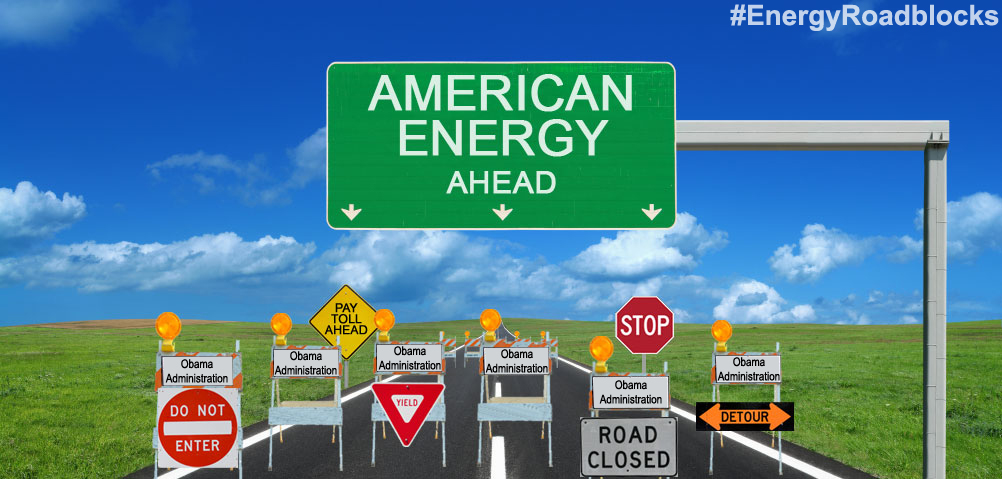
Alaska is home to some of the most abundant energy resources in this country. These resources, if responsibly harnessed, hold the potential to significantly strengthen American energy independence, create thousands of American jobs and generate billions of dollars in new revenue. Unfortunately, the Obama Administration continues to lock-up vast amounts of Alaska’s energy resources.
The Obama Administration has delayed permits in the National Petroleum Reserve-Alaska (NPR-A) and is proposing to put over half the reserve off-limits to American energy production.
-
The NPR-A was set aside as a petroleum reserve and remains specifically designated for the purpose of providing oil and natural gas resources to the people of the United States. According to the U.S. Geological Survey, the NPR-A contains 2.7 billion barrels of oil and 114 trillion cubic feet of natural gas, and there is broad, bipartisan support for developing its resources.
-
The Obama Administration’s Interior Department this year proposed a land management plan that would withdraw half of the 23.5 million acres in the NPR-A to American oil and natural gas production. This would represent the largest wholesale land withdrawal by the federal government in decades.
-
Bureaucratic delays imposed by the Obama Administration continue to block the construction of necessary roads, bridges and pipelines needed to transport the energy out of the Reserve once it is produced. For example, ConocoPhillips waited over four years for a permit to build a bridge and pipeline in order to transport oil and natural gas out of a ready-to-produce field.
The Obama Administration opposes opening a small portion of the Arctic National Wildlife Refuge (ANWR) to responsible energy production.
-
The North Slope of ANWR, which is not designated as Wilderness, was specifically set aside in 1980 by President Jimmy Carter and Congress for oil and natural gas development. New technologies would allow the full energy potential of ANWR to be accessed by opening up less than 3 percent of its 19 million areas.
-
According to U.S. Geological Survey estimates, ANWR contains approximately 10.4 billion barrels of oil and at peak production could supply the U.S. with up to 1.45 million barrels of oil per day. This is more than the U.S. imports daily from Saudi Arabia.
-
House Republicans have passed legislation to open less than 3 percent of ANWR to energy production, which would create tens of thousands of new jobs and strengthen our economy.
The Obama Administration has delayed offshore leases in the Arctic and continues to keep areas off-limits to new offshore drilling.
By blocking increased energy production in Alaska, the Obama Administration is also putting the future of the Trans Alaskan Pipeline System (TAPS) at risk.
-
TAPS is the conduit for transporting oil from the far north across Alaska for shipment to Washington state and California for refining and use in the lower 48 states. TAPS at one time conveyed over 2 million barrels of oil a day, but reduced production has left the pipeline at less than half capacity, threatening a shutdown that would impact thousands of good paying jobs.
-
TAPS is one of the most important pieces of energy infrastructure in our nation. Unfortunately, federal policies and inaction are threatening to starve TAPS into destruction.
To learn more about how the Obama Administration has blocked, delayed and hindered American energy production, visit /roadblocks
Part 1: Offshore Drilling
Part 2: Hydraulic Fracturing on Federal Lands
Part 3: War on Coal
###
Printable PDF of this document


